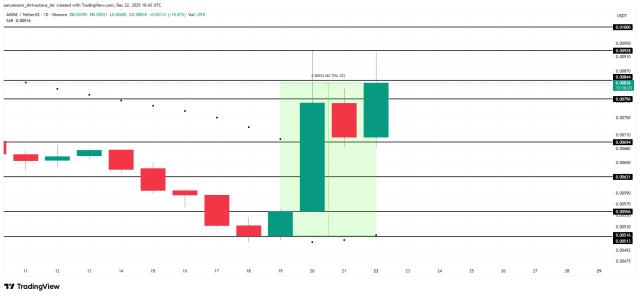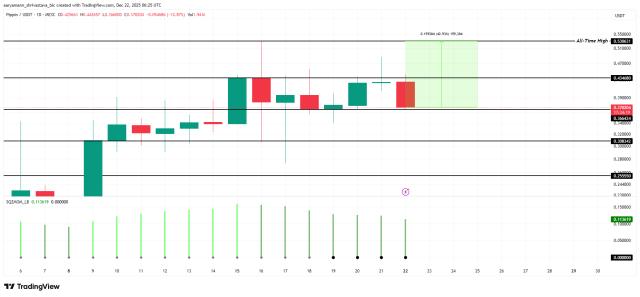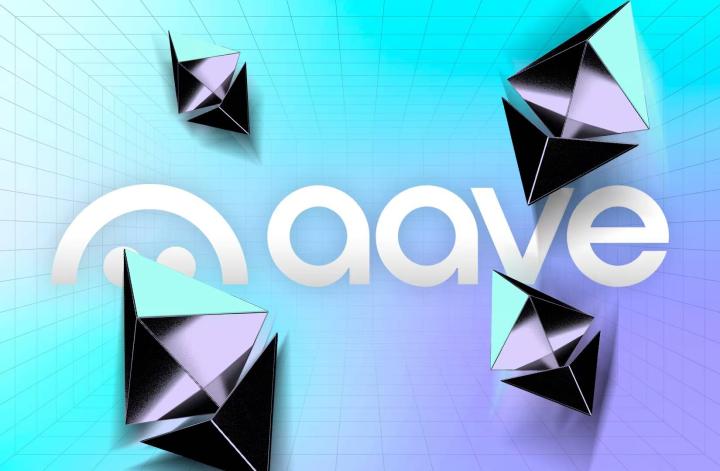In the previous article " Is the team's work really related to the currency price? " , we analyzed the correlation between the overall GitHub development situation in the industry and the rise and fall of the token price, and concluded that the six factors of GitHub are related to the rise and fall of the currency price. The conclusion is that the amplitude is positively correlated in both bull and bear markets.
This article further expands the conclusion of "correlation" and studies the causality between the two, that is, "Is it because technological upgrading promotes the rise in currency prices, or does the rise in currency prices drive technological upgrading?" This helps investors and developers to more clearly understand the position of the fundamental factor of "technological development" in the rise and fall of currency prices.
The general idea of the article is as follows:
First, we build the Github Development Activity Index (GDAI) for a single token.
Secondly, on this basis, combined with factors such as industry market value rankings and the regular trend of the number of GitHub projects over time, an Industry Github Development Activity Index (IGDAI) was constructed to reflect the overall GitHub development activity of the entire industry.
Then, by comparing the industry development activity index IGDAI with the trend of currency price increases and decreases in the past six years, we determine the causal relationship between technology and price.
Finally, the GDAI indicator is applied to tokens that have been developed in the past six years, and the differences between its development activity indicator value and currency price increase are compared with those of BTC and ETH to confirm the previous judgment on the causal relationship between technology and price.
Step1. Use the Analytical Hierarchy Process to construct the GitHub Development Activity Index GDAI (Github Development Activity Index) for a single project.

The specific GDAI formula is as follows:

**The Analytic Hierarchy Process (AHP)** is a comprehensive evaluation method for system analysis and decision-making. It decomposes the elements of the required decision-making into the objective layer (objective), the criterion layer (criterion) and the program layer ( scheme). On the basis of decomposition, qualitative and quantitative analysis are carried out again, and the calculation method is simple and efficient.
(1) Analyze the relationship between various factors in the system and establish a hierarchical structure of the system
Decompose the target layer GDAI into 5 criterion layers
μStar, μFork, μCommit, μIssues, μPullRequests.

(2) Establish a judgment matrix
Compare each element in the same level with respect to the importance of a certain criterion in the previous level, and construct a pairwise comparison matrix (judgment matrix). We identify measures of varying importance on Table 2.

Create the following judgment matrix for criterion layer B. Based on experience and the nature of the indicators, the priority of contributions to GitHub development activity is Commit>Pullrequests>Issues>Fork>Star . Since the Star and Fork metrics are not particularly directly linked to development activity, we will assign a relatively low score to their weight.

(3) Consistency Check (CI)
Characteristic equation of matrix B:


(4) 3 methods to calculate weight
Method 1: Arithmetic average method

The weight vector formula derived is:

Method 2: Geometric mean method

Method 3: First use the eigenvalue method to determine the maximum eigenvalue and corresponding eigenvector of matrix A. The feature vectors are then normalized to the desired weights.
The average of the weights obtained by the above three methods is the final weight value. The specific results are shown in Table 4:

Therefore, the specific GDAI indicator formula can have the following form:
$$$ GDAIi =0.03Star i + 0.05Forki + 0.44Commiti + 0.15Issuesi + 0.32Pullrequestsi. $$$
Step2. Industry-wide GitHub development activity index IGDAI (Industry Github Development Activities Index) based on GDAI optimization
In Step 1, we built the GitHub development activity indicator GDAI for a single token. Now based on GDAI, taking into account all tokens in the cryptocurrency industry that are listed and open source on GitHub, and by summarizing the GDAI of all tokens, we can obtain the industry-wide GitHub development activity indicator IGDAI. The specific IGDAI calculation formula is as follows:

Where n represents the total number of tokens circulating in the cryptocurrency market and open source on GitHub in a certain interval.
There are usually two ideas for constructing a certain indicator to reflect the situation of the entire industry:
1. Select representative targets to calculate their performance 2. Comprehensively consider the situation of the entire industry
For idea 1, we first consider that the current cryptocurrency industry ecology is not very complete. Many tokens with currency prices and good market value performance are not open source, and third parties cannot obtain their specific development information. The selected targets are "representative" "It remains to be discussed; secondly, the current cryptocurrency industry is still a blue ocean with vast space for development. For each token, it is possible to achieve rapid development in a short period of time; thirdly, the cryptocurrency industry has high liquidity characteristics of 24-hour trading. This makes the market value of the industry fluctuate greatly in the short term. If you change the selected target with reference to the A-share market within half a year, you may miss a large amount of information on changes in token market value.
Therefore, this article comprehensively considers the development information of tokens in the entire industry to calculate IGDAI.
Step3. What is the cause and effect of “technical revolution” and “increased currency prices”? Currency price changes affect GitHub development level in one direction
We use the **Granger casuality test to analyze the causal relationship between two time series data of industry development activity IGDAI and BTC price changes. The time period is 2015-2023.10.31, and the index dimension is "day" ". First, determine the lag order to be 4, and determine that both types of data are stationary sequences through the unit root test (Unit root test) (the premise of the data "stationary" Granger causality test), and obtain the following results:

Among them, 0.000<0.05 means that the F test rejects the null hypothesis (null hypothesis H0: there is no Granger causality between the two). BTC_price is the cause of IGDAI, that is, the industry GitHub development activity IGDAI is affected by the lag term of currency price changes.
0.135>0.05**, indicating that the F test accepts the null hypothesis and IGDAI is not the cause of BTC_price. In summary, changes in currency prices have a one-way impact on industry development activity. **
At the same time, we use charts for more intuitive analysis. Considering that the development activity index with a daily range fluctuates greatly, there are many accidental factors, and the view is not intuitive, we perform exponential smoothing and expand the time period to "weeks". Figure 2 shows the changes in the IGDAI index and BTC price from 2015 to the present, with the time period being "monthly":

This figure very intuitively shows that the changes in the industry development ecology lag behind the changes in the BTC currency price in different periods, and the two fluctuate at similar amplitudes, confirming the conclusion that IGDAI is unidirectionally affected by currency price changes.
And we find from the figure that in the past few months, the industry development activity index has plummeted 31.7%, the largest decline in the past decade!
Step4. As long as the development team does not mess up, keeps developing, and survives the bear market, won’t the currency price be too high? wrong!
In Step 3, we established the conclusion that currency price affects technology development in one direction through Granger causality test . **But we also want to explore whether there is a special relationship: even if the degree of GitHub development is not an antecedent to improving the rise and fall of currency prices, as long as the team does not mess up, keeps developing, and survives the bear market, will the currency price performance improve? It won't stretch your hips particularly. **Taking into account the maturity period of the token development ecosystem and changes in the richness of token types, we decided to look for tokens that have been continuously developed from 2018 to the present, and compare the relationship between their GitHub development activity GDAI and currency price increases and decreases with BTC.
Among them, we define "continuous development" as the three factors of commit, issues, and pull requests that are the core of GitHub development and are not 0 at the same time every week from 2018 to October 2023. The price increase and decrease is defined as the period (highest price - lowest price)/lowest price. Through massive data crawling and analysis, we first determined that a total of about 1,400 tokens have been open sourced and listed at the same time since 2018. We found 38 of the 1,400 tokens that met the above conditions (including BTC and ETH. Considering the development ecology of BTC and ETH The market capitalization is very mature and very representative. Considering the length of the article, this article focuses on the comparison results of the remaining 36 tokens with BTC). The specific token list is shown in Table 6:

Regarding GitHub development activity GDAI, statistics of 38 tokens are obtained, and Figure 3 is obtained:

Red indicates tokens whose IGDAI exceeds BTC, blue indicates those which have not exceeded. Among the tokens that continue to be developed, 9 tokens have more development activity than BTC.
Regarding the rise and fall of currency prices, Figure 4 is obtained:

Red indicates tokens whose currency prices have risen or fallen more than BTC, blue indicates those whose currency prices have not exceeded. Among the tokens that continue to be developed, the price of 31 tokens has increased more than BTC.
Summarizing the two graphs, there are 8 red tokens that overlap with each other. That is, from 2018 to the present, there are 8 tokens whose Github development activity GDAI and currency price increase and decrease performance are both better than BTC (industry weathervane), accounting for this range 22% of all tokens under continued development . The specific tokens are shown in Table 7:

From the perspective of continuous development, the coincidence rate of 22% is low. Therefore, we can only conclude that continuous development has a certain impact on currency prices, but it cannot be absolutely proved that continuous development has a very positive pulling effect on currency prices. This view is also mutually confirmed with the results of step 3 Granger causality test.
Article conclusion
Through the above content, Falcon makes a summary of the conclusion of this article:
With the help of the analytic hierarchy process, this article established a development activity index GDAI for a single token, and also established an industry-wide GitHub development activity index IGDAI for the entire industry.
By analyzing the "Industry-wide GitHub Development Activity Index IGBDAI" and "BTC Price Data" from 2015 to 2023.10, it was found that currency prices only affect GitHub development activity in one direction. And in the past few months, the industry development activity index plummeted 31.7%, the largest decline in the past decade.
"The team continues to develop and not fail" is not the core driving factor for the rise in currency prices after the bear market. When investing, you also need to comprehensively consider the impact of other factors on prices.
About LUCIDA&FALCON
Lucida ( https://www.lucida.fund/ ) is an industry-leading quantitative hedge fund that entered the Crypto market in April 2018. It mainly trades CTA/statistical arbitrage/option volatility arbitrage and other strategies, with a current management scale of US$30 million. .
Falcon ( https://falcon.lucida.fund/ ) is a new generation of Web3 investment infrastructure. It is based on a multi-factor model and helps users "select", "buy", "manage" and "sell" crypto assets. Falcon was hatched by Lucida in June 2022.
More content can be found at https://linktr.ee/lucida_and_falcon
Previous articles
Development as the Driving Force: Understanding the Impact on Token Price Performance?
Is "the team doing something" really related to the currency price?
5 million rows of data review Crypto’s three-year bull market @LUCIDA
5 Million Rows of Data Recap: Investigating The Crypto Market's 3-Year Bull Run @LUCIDA
LUCIDA: Use multi-factor models to select tracks and currencies
LUCIDA × SnapFingers DAO: 21 top public chains in three-year bull market recap
LUCIDA × OKLink: The value of on-chain data to secondary market investment







